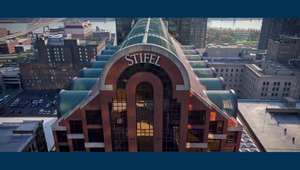
Out of Home Advertising: The Real Touchdown for Marketers

Photo Credit: Sphere Entertainment
Pop quiz: Which brand featured Tina Fey in its Super Bowl ad? How about Mr. T? Or a gelatinous red creature grooving to the “Flashdance” theme song?
If you don’t remember, you’re far from alone. Statistics show that Super Bowl ad recall is declining. Yet, the price of a 30-second commercial continues to skyrocket, reaching a record $7 million this year.
While many of Sunday’s TV commercials have now faded from viewer’s minds, I’m willing to bet that people who saw the pyramid-shaped Luxor hotel transform into a massive Doritos chip or the 1,149-foot Strat hotel reimagined as a giant Don Julio 1942 Tequila bottle will remember those messages for years to come - even if they only saw the images on social media.
That’s because out of home (OOH) advertising has the unmatched ability to stand out from other mediums. With its powerful messaging and ability to appear on a vast range of unique formats, OOH maintains a higher level of recall than TV ads, as well as podcasts, radio, print, and online advertising.
During a time when many businesses are scrutinizing spending, in-game Super Bowl advertisers could have reaped more bang for their buck by opting for an OOH media buy. For just about that same $7 million, brands could achieve four weeks of continuous exposure on digital billboards spanning the top 27 markets, garnering close to one billion impressions. In comparison, this year’s Super Bowl had a record-breaking viewership of 123.4 million.
Given the fiercely competitive and crowded Super Bowl ad environment, a commercial can be easily overlooked. If a game watcher steps away to grab a snack or take a bathroom break, that multi-million-dollar message can go unseen. And unless the ad gets some notable pre-and post-game buzz, a viewer may not go out of their way to find it and view it online.
Yet, an OOH campaign always stands out. The executions in Las Vegas showed how creative this messaging can be, with marketers turning hotels, tourist attractions, baggage claim areas, transit platforms, the Strip, and the Sphere into attention-getting canvases. Even some of the TV spots during the Big Game included a nod to OOH. Brands like BetMGM, Hellmann's Mayo, Pringles, and Volkswagen strategically incorporated OOH references into their commercials, further showcasing the strength and effectiveness of this medium.
Super Bowl advertisers, such as Hellmann’s, Budweiser, and Bud Light, and non-Super Bowl advertisers, including Pepsi and FedEx, crafted innovative campaigns for the Sphere’s digital dome. The NFL also cleverly capitalized on that ad space, using its shape to show images of team helmets and Super Bowl rings.
Separately, Cheetos tapped into the flavour of Vegas by creating an orange and black Cheetos Chapel on the Strip. Signage billed it as a place for mischief and matrimony. Inside, a holographic Chester Cheetah served as the wedding officiant.
The OOH ads in Vegas didn’t just stay in Vegas. They spread worldwide through LinkedIn, Instagram, Facebook, TikTok, and other social media posts, underscoring OOH’s ability to drive 5.9 times more social posts than any other medium.
OOH’s creative and technical advances empower marketers in any market to get the right message out to the right audience at the right time in a contextually relevant, cost-effective way. Case in point regarding cost effectiveness: In 2023, the CPM for a Super Bowl ad was about $63 while OOH’s CPMs range from $2 to $9, according to Solomon Partners.
As marketers start to make their plans for Super Bowl LIX in New Orleans, it’s clear that OOH should be part of their playbook.















